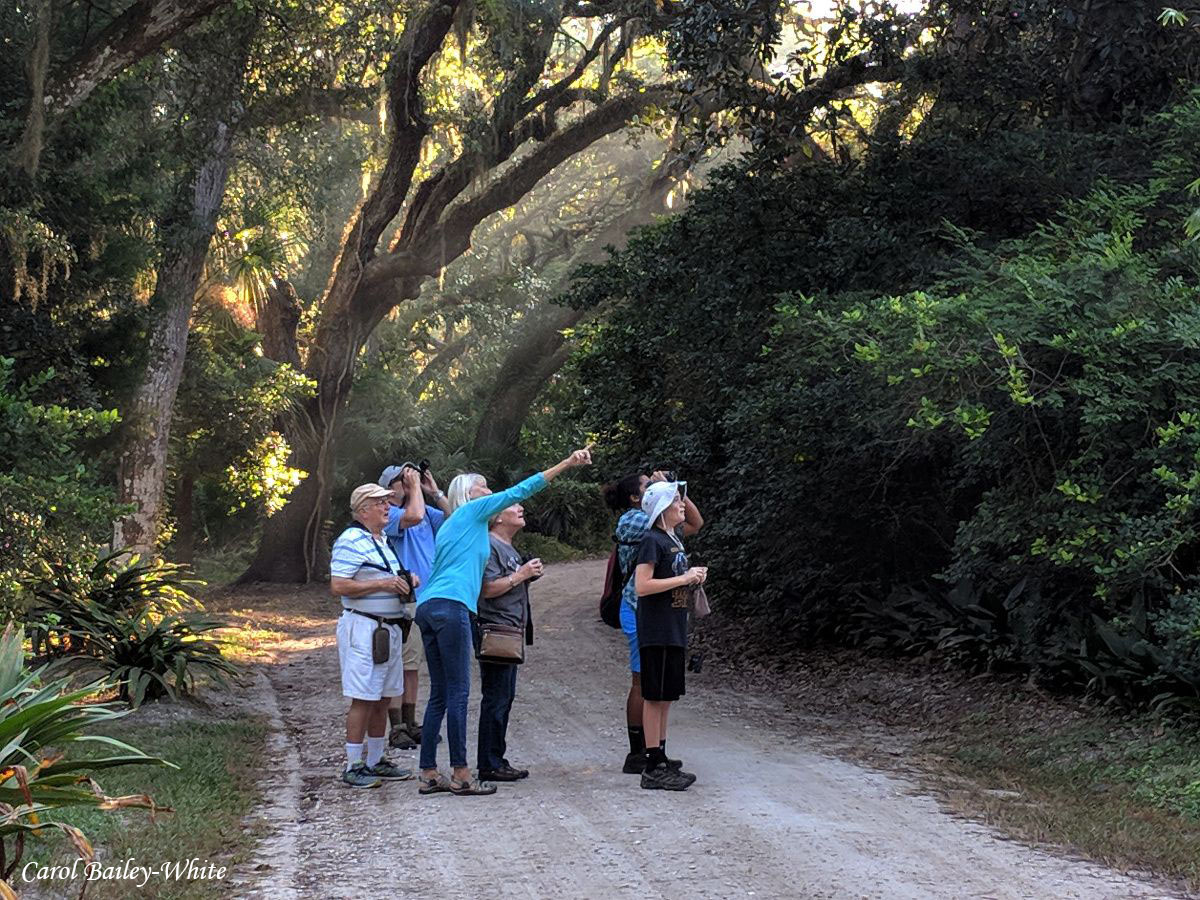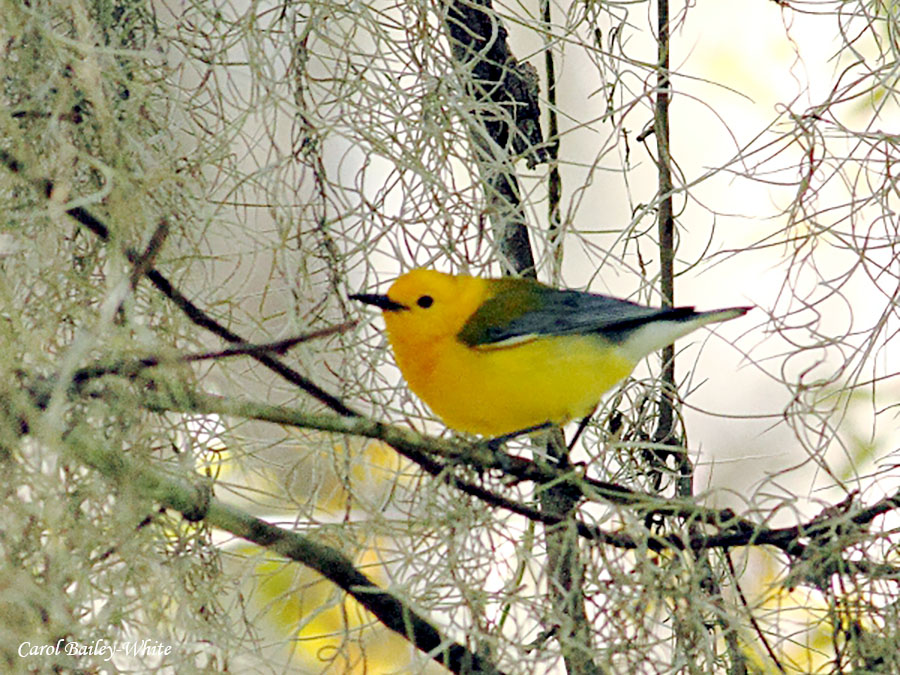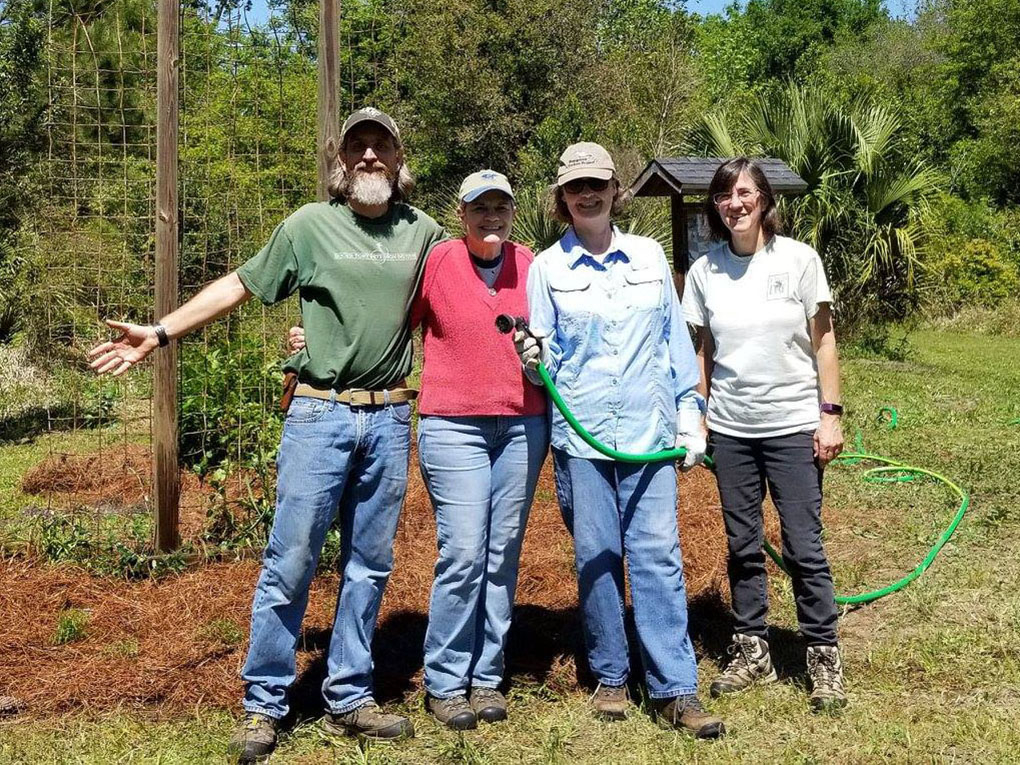The Audubon Observer, May 2020
|
|
||||
BIRDING IN THE TIME OF CORONAVIRUS Due to the current worldwide health crisis and following the recommendations of National Audubon and Audubon Florida, all of our field trips and programs scheduled through the rest of the current 2019/2020 season (the end of May 2020) have been canceled. We truly miss sharing the excitement of birding with our fellow nature lovers, but we take the health and safety of our members and volunteers very seriously, and want to err on the side of caution in these frightening times.
If you want to use this time to brush up on your birding skills, there are many online resources available to help. Here are a few of our favorite ways to learn more about the birds we love so much: National Audubon Society's website has a wide array of wonderful, free resources to help you develop your birding skills. Check out How to Identify Birds, Backyard Birding, and Birding By Ear, to name just a few. The Cornell Lab of Ornithology also has many free learning resources available, including The Four Keys to Bird Identification, Bird ID Skills: Field Marks, Bird ID Skills: How to Learn Bird Songs and Calls, and their excellent Inside Birding video series. And if you use eBird to keep track of your bird sightings, Cornell Lab's Bird Academy also offers a free eBird Essentials online course that will help you get the most out of what eBird has to offer. Don't miss our Virtual Bird Walk video, which introduces a few of the most common birds that can be found in northeast Florida at this time of year. And you might also enjoy our Virtual Visit to Crosby Sanctuary (Spring 2020 edition), since we can't host any group outings right now. Spring migration has been incredible in our area over the last few weeks, with many sightings of beautiful warblers such as American Redstart, Black-throated Blue, Prairie Warbler, Northern Parula, Prothonotary Warbler, Blackpoll Warbler, and more. Hope you can get out and go birding soon! --Carol Bailey-White, Vice President NATIVE PLANTS FOR BIRDS: SPANISH MOSS This is my last native plant article for our newsletter this season and I thought that it would be fitting to salute Spanish Moss (Tillandsia usneoides), which we see everywhere but don’t even consider the wonder of its existence and the benefits it bestows to wildlife, especially birds. With much gratitude, this piece is excerpted from an article written by Ginny Stibolt for her wonderful website, Green Gardening Matters. I encourage you to explore it and all the helpful information it provides. I will be back in the fall with more native plant articles – have a peaceful, SAFE summer.
Believe it or not, Spanish Moss is a flowering plant; the yellow-green to red flowers are so small that they are nearly imperceptible. The flowers bloom in the summer, last only a few days, and emit a subtle fragrance which attracts a variety of insect pollinators. Fruit, in the form of tiny capsules, release the seeds the following winter and this dispersal is aided by delicate hairs, almost an inch long, which act as kites. These hairs are covered with tiny barbs which can anchor in the cracks of rough tree bark. The seedlings have root-like holdfasts but they never penetrate the host tree and don’t last long because the mature plant has no roots at all. Spanish Moss reproduces more commonly by vegetative reproduction than by seed dispersal. Small broken fragments are scattered by wind, birds, and other animals and they can float on water as well. If the site is appropriate where a fragment lands, then a new plant will grow. Spanish Moss has the largest native range of any member of the pineapple family. This is due, perhaps, to strong hurricane winds which transport it great distances coupled with its ability to grow to full size from a small piece.
The Native Americans wove it into their clothing and used it to make torches. Early European settlers used it as a binding material in the mortar mix to build log cabins; also, used it for fabric by drying it out and spinning it into coarse yarns. It was also commercially ginned staring in the late 1800s until the 1930s. The outer skin was removed by ginning and used for stuffing material for mattresses and furniture. The upholstery in the Model T Fords and other cars were stuffed with Spanish Moss. How did it get its name? The Native Americans called it itla-okla (tree hair). They communicated this to the early French explorers who were in competition with the Spanish explorers. The French explorers named it barbe Espagnol (Spaniard’s beard). The Spanish explorers called it cabello Frances (French hair). The French name, barbe Espagnol, was modified to Spanish Moss and that is the name stuck in our lexicon. For additional information on native plants for birds, check out Audubon's excellent Plants for Birds website: Audubon.org/plantsforbirds. For local sources of native plants, check with the Ixia Chapter of the Florida Native Plant Society. They often have native plants as well as cuttings available at their monthly meetings on the first Tuesday of each month. Check out their Events Calendar for all of their upcoming activities. --Jody Willis, President VIRTUAL PHOTO SHARING Since we can't hold our annual "Best of Us: Photo Sharing and Potluck Here's how to participate: Pick your ten best bird photos from the past year, and send them to us along with the ID of each bird species, the date and location where the photo was captured, and any additional information you want viewers to know about your photo. We'll compile them all into a video slide show that will showcase our members' photographic talents! You can either send them to us via email at duvalaudubon@gmail.com, or The deadline for submitting your photos for inclusion in our Virtual Photo Sharing project will be Saturday, May 23, 2020, and we'll have the video slide show ready for your viewing pleasure by May 31st. If you haven't already included your personal watermark on your photos, we'll add your name to each photo to make sure all photos are properly credited to the photographer. We can't wait to see (and share) your amazing photos! And please feel free to reach out to us with any questions about how to participate. --Carol Bailey-White, Vice President 2020/2021 BOARD OF DIRECTORS
We are happy to announce Duval Audubon's 2020/2021 Board of Directors, with a special welcome to new board members Helen Kehrt and Christopher Conner. Thank you all for your willingness to serve!
We are currently in need of a board member to serve as the Field Trips and Programs Director. If you would like to join our board to help our chapter achieve its mission of connecting people with nature, please contact current president Jody Willis. As the current worldwide health crisis continues to develop, we sincerely hope we will again be able to offer our regular schedule of exciting field trips and informative programs in the fall. But we are still here for you, our members and supporters, so please take care of yourself and your family, and feel free to contact us with any questions. --Jody Willis, President Duval Audubon Society, Inc. |
||||

 But even though we can't go birding with you right now, that doesn't mean you can't enjoy birding on your own in your neighborhood, at a nearby park, or even in your own backyard!
But even though we can't go birding with you right now, that doesn't mean you can't enjoy birding on your own in your neighborhood, at a nearby park, or even in your own backyard!![Photo of Spanish moss by an unknown author [This Photo by Unknown Author is licensed under CC BY-SA] Spanish Moss unknown author](http://duvalaudubon.org/images/DASimages/Spanish_Moss_unknown_author.jpg) Spanish Moss is a flowering plant in the pineapple family, so it’s not a moss at all. It is an epiphyte or air plant found in damp areas near waterways or swamps because it absorbs its moisture and nutrients from the air. It is not a parasite like mistletoe and does not rob the host tree of water or nutrients. It is covered with scales or flaps on its surface which allows it to absorb moisture from the air and catch the dust particles which are needed for nutrients. These scales or flaps (also called trichomes) slow down transpiration so that the plant doesn’t dry out too quickly.
Spanish Moss is a flowering plant in the pineapple family, so it’s not a moss at all. It is an epiphyte or air plant found in damp areas near waterways or swamps because it absorbs its moisture and nutrients from the air. It is not a parasite like mistletoe and does not rob the host tree of water or nutrients. It is covered with scales or flaps on its surface which allows it to absorb moisture from the air and catch the dust particles which are needed for nutrients. These scales or flaps (also called trichomes) slow down transpiration so that the plant doesn’t dry out too quickly. Its value for birds is incalculable. Insects, spiders, mites, and other delicious insects live in Spanish Moss. That is why it is a great place to watch for migrating warblers in the spring and fall as they are primarily insect eaters. Warblers will also build their nests in Spanish Moss and larger bird species will line their nests with it.
Its value for birds is incalculable. Insects, spiders, mites, and other delicious insects live in Spanish Moss. That is why it is a great place to watch for migrating warblers in the spring and fall as they are primarily insect eaters. Warblers will also build their nests in Spanish Moss and larger bird species will line their nests with it. Dinner" get-together this month, we invite you to help us offer the next best thing: a virtual photo sharing experience! Have you photographed any cool birds this year? We'd love to incorporate them into a slide show of our members' best bird photos captured since May of 2019.
Dinner" get-together this month, we invite you to help us offer the next best thing: a virtual photo sharing experience! Have you photographed any cool birds this year? We'd love to incorporate them into a slide show of our members' best bird photos captured since May of 2019. use the Send Message link on
use the Send Message link on  Duval Audubon Society is an all-volunteer organization operated by a Board of Directors who manage the day-do-day business of running a chapter of the National Audubon Society.
Duval Audubon Society is an all-volunteer organization operated by a Board of Directors who manage the day-do-day business of running a chapter of the National Audubon Society.